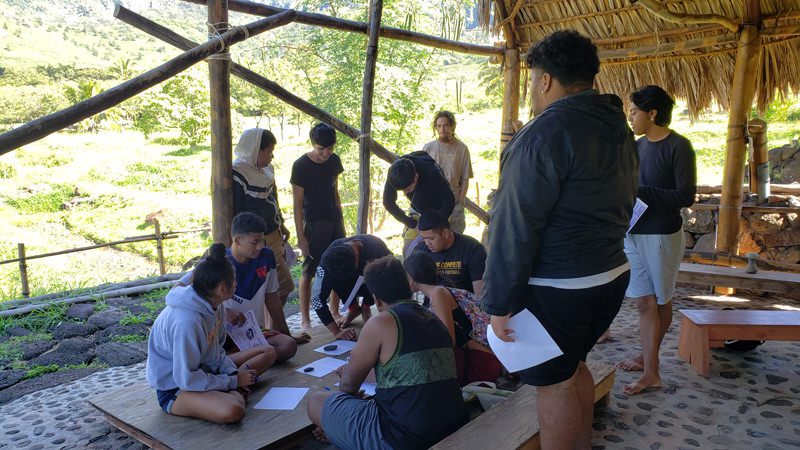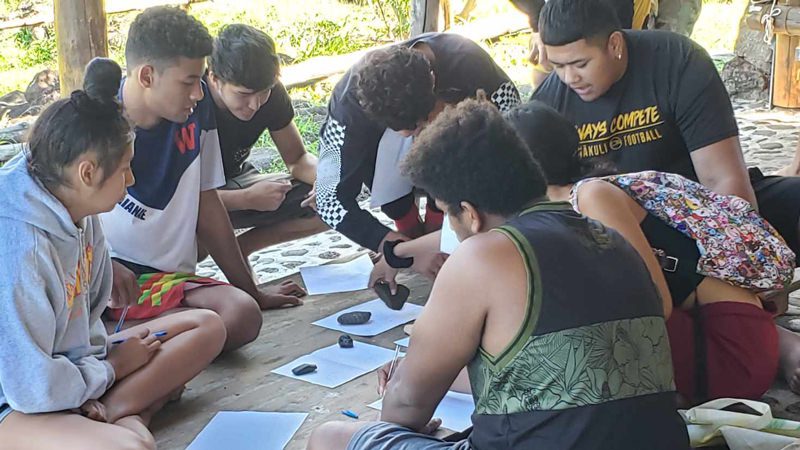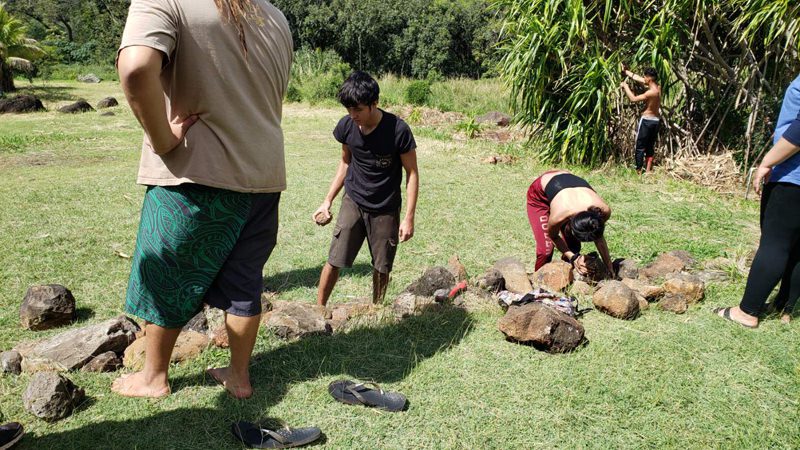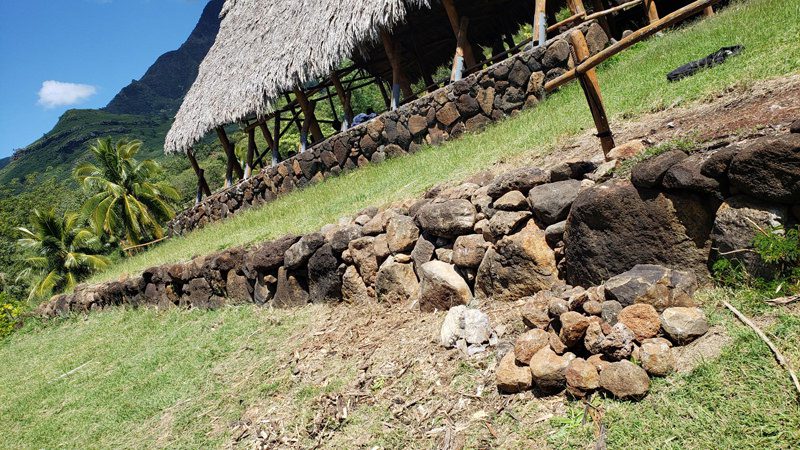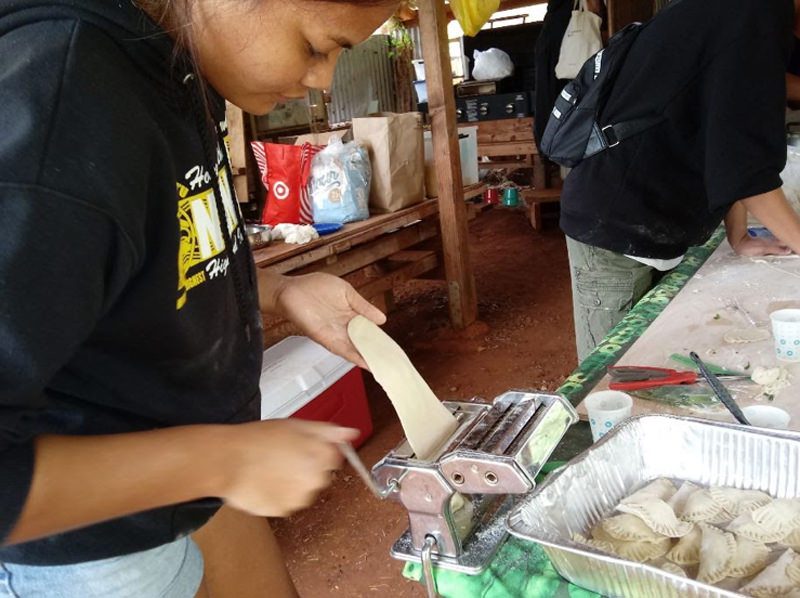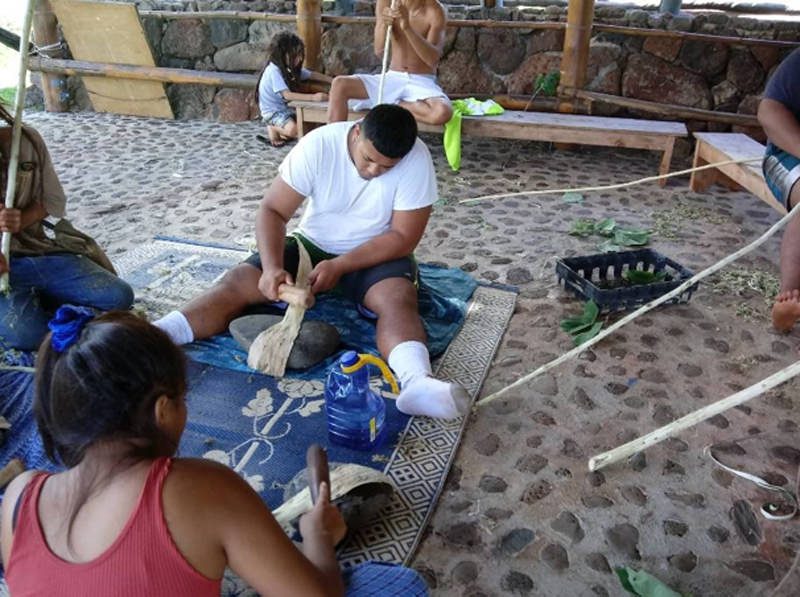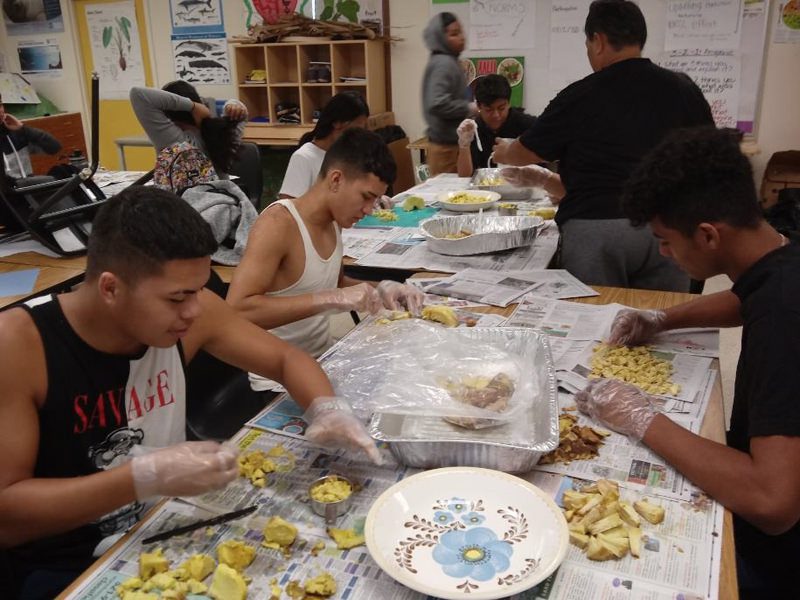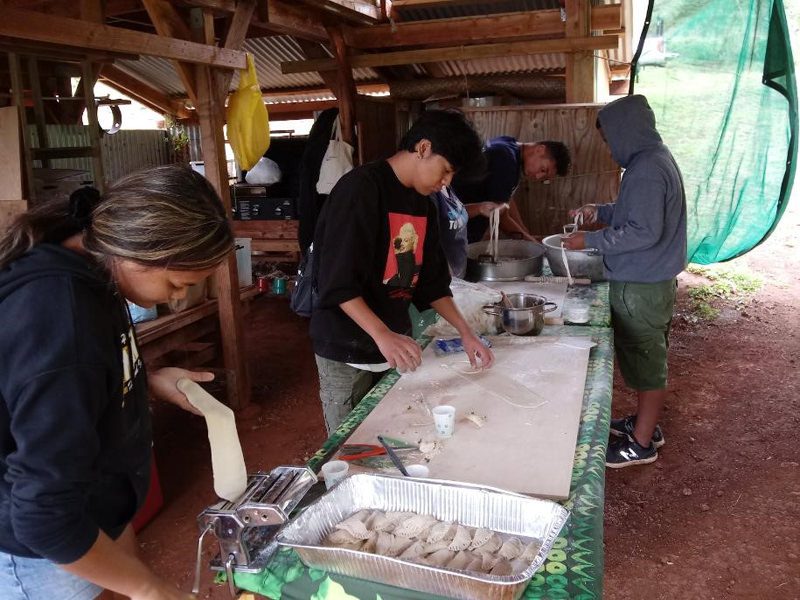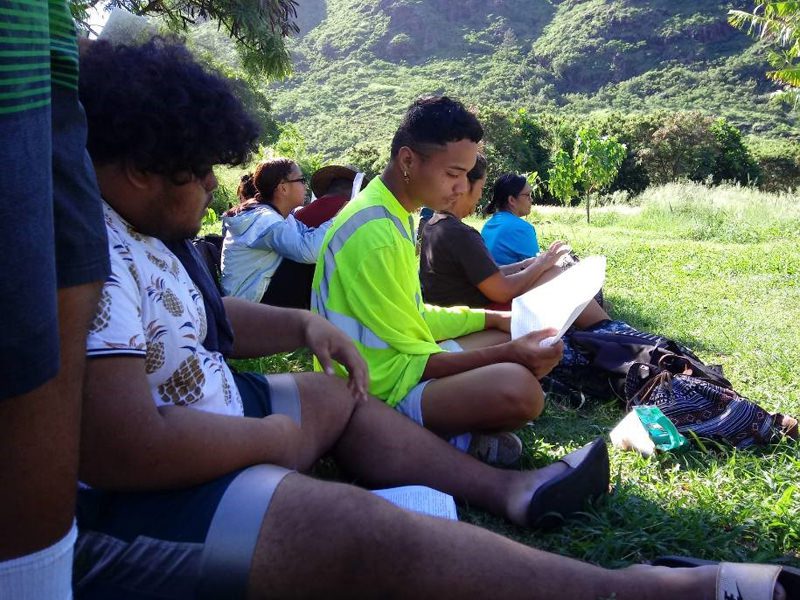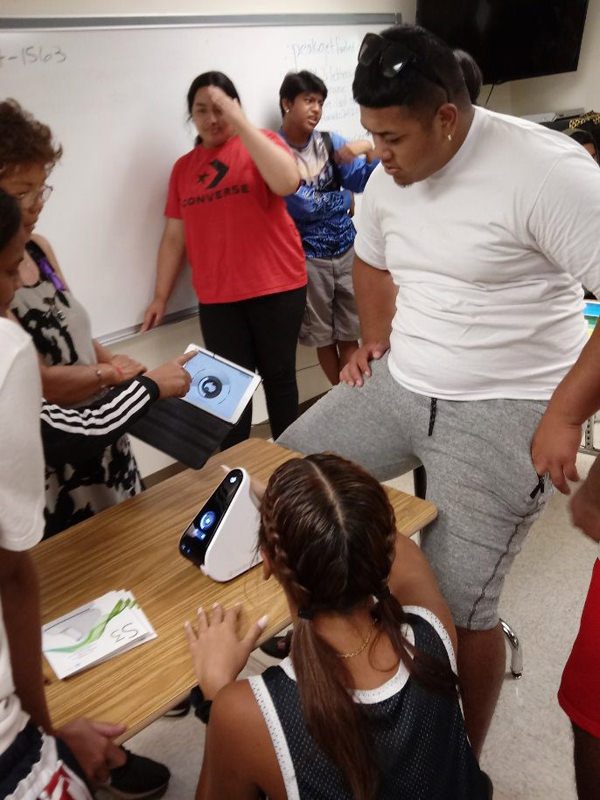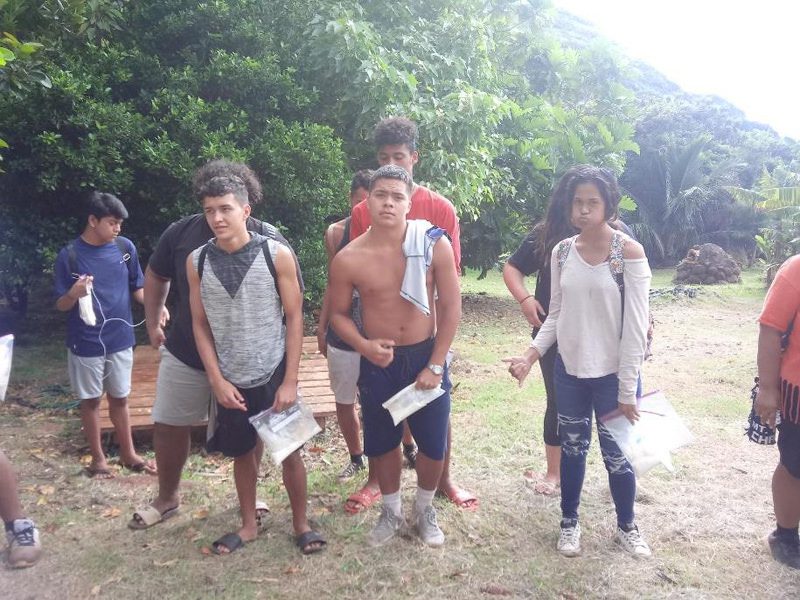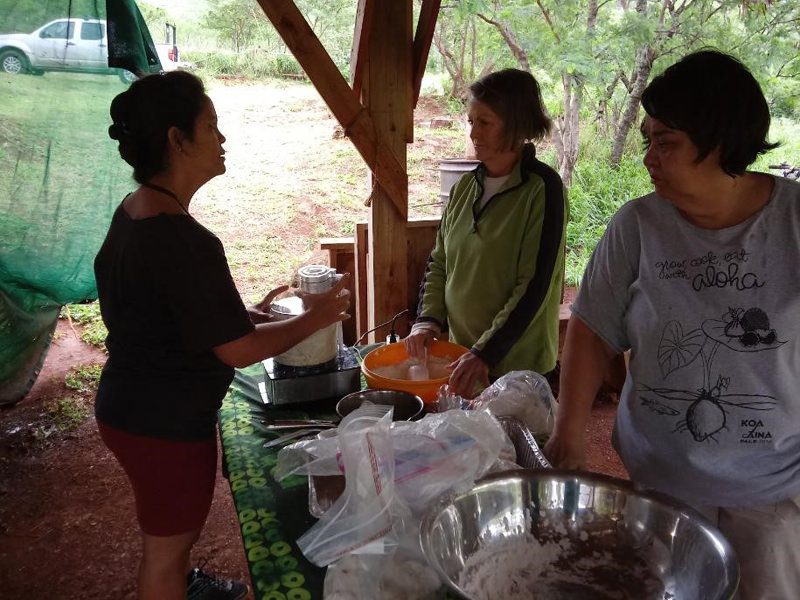School: Nānākuli High & Intermediate School
Teachers: Jewelynn Kirkland, Katie Fisher, and Trina Ku
Driving Question: How can we as ʻĀinapreneurs source locally grow food and materials to make products that can be marketed and sold?
How can we become ʻĀinapreneurs?
What did the students DO?
Enduring Understanding: Students learned the process of establishing a small business using locally sourced raw materials that they crafted into projects, which were referred to as ʻĀinapreneurs.
Throughout this process, the students searched for locally available food and plant resources that could be used in making nutritious products. Plant identification was one of the initial key learning concepts. Where does our food come from? Some of the raw materials they experimented with were sugar cane, kalo, ʻulu, papaya, coconut & fibers, kapa, kukui nut ʻinamona, leis, kapa, ti leaf, calamansi lime, and lauhala).
They met current ʻĀinapreneurs and discussed what it took to become successful. Terri Langley joined the team later in the year and had the opportunity to share her experiences in running small businesses making healthy, nutritious food dishes sourcing as much locally as possible. Design thinking was key to determining what the needs of the community are considering the resources and skill set available to meet those needs. What does it mean to produce healthy, local food? Students address examples and comparatives to traditional and comfort food diets. HĀ assessment Nā Hopena Aʻo was another feature included assuring this project had a significant relational aspect and consideration of promoting Hawaiian values. Students need to feel safe and accepted in a comfortable living environment in order to take risks and apply themselves to projects they havenʻt done before.
The students experimented and analyzed existing food products made from local sources. They had to understand growing seasons, harvest time periods, and observing for proper ripening of the harvest. Timing is really important because much of a crop could be lost if not harvested at the proper time. When preparing and storing food products, they had to consider proper sanitation and storage shelf life. Kalo and ʻulu were a major focus. Learning about these foods as a starch, students considered what are some other familiar starch-based foods that could be substituted with ʻulu/kalo to localize the dish?
The writing the students did involve the LLC organization process, business ethics, writing recipes, and feedback & reflection. They learned the purpose and benefits of setting up an LLC (Limited Liability Company). Procedural and persuasive writing was the main genres of writing.
The math component addressed economics and personal finance, Expenses vs Revenue, creating a balance sheet, investment costs for start up, food miles and costs associated with it.
In regards to History, the students explored how have other cultures used these food and fiber products in the era of their civilizations? What kinds of products were required based on the lifestyles and resources available at the time?
Teachers organized the students into groups to focus on different aspects of the business and prototypes.
Students conducted a market analysis for which types of food-based products could be both healthy
and successful in either local or international markets. They explored the costs associated with producing various products and surveyed peers to determine what the potential demand might be for various products made locally.
Some of the prototype designs for a healthy food product the students experimented with were ʻulu dough noodles, kalo flatbread pizzas, kalo dough empanadas, ʻulu hummus, and kalo poke. The fiber components focused on kapa making, dyes for the kapa cloth, and lauhala weaving. These units contained more of an artistic feature and encouraged the creative spirit of the students.
Reflection and revision of the prototype with peer feedback was an essential part of the project. Students often had to design a new prototype based on the feedback to fine-tune the products. Some of the parameters included product quality (taste, aroma, consistency), and what kind of packaging/advertising would suit the product to make it attractive to consumers. Once the prototypes were dialed in just right, production of products and marketing (logos & labels) & sales was the next phase
Place-Based Field Experiences/Connections
One of the regular Place-based Field Experiences these students had the opportunity to take advantage of was trips to Kaʻala Farm, a cultural learning center nearby with restored loʻi. The farm also has several Hawaiian food and fiber plants that were convenient for sourcing the raw materials needed to come up with the various products the students created.
The students also visited the new local farmers market established in Nānākuli to try out selling some of their products. The feedback from the consumers was overall very positive.





